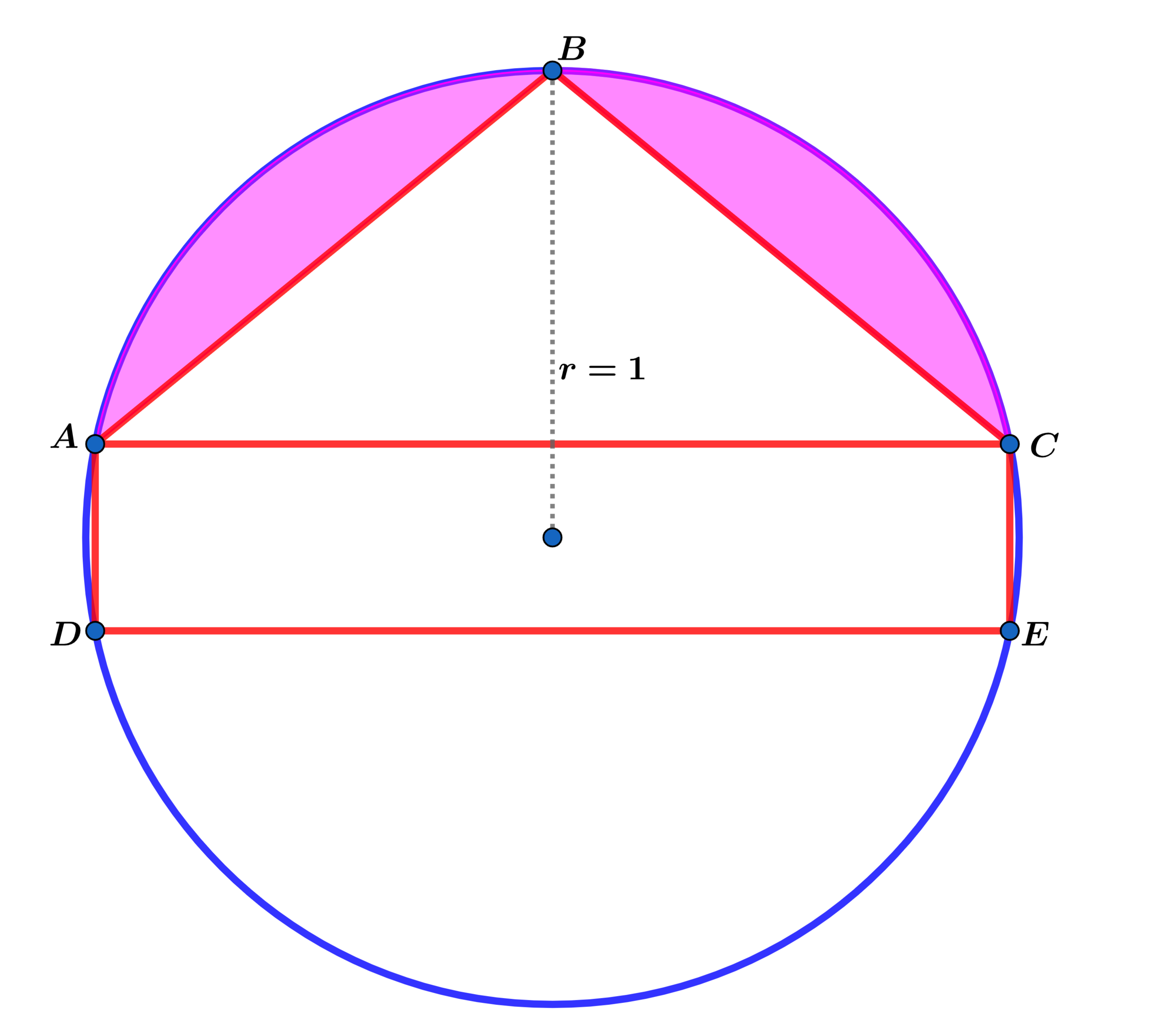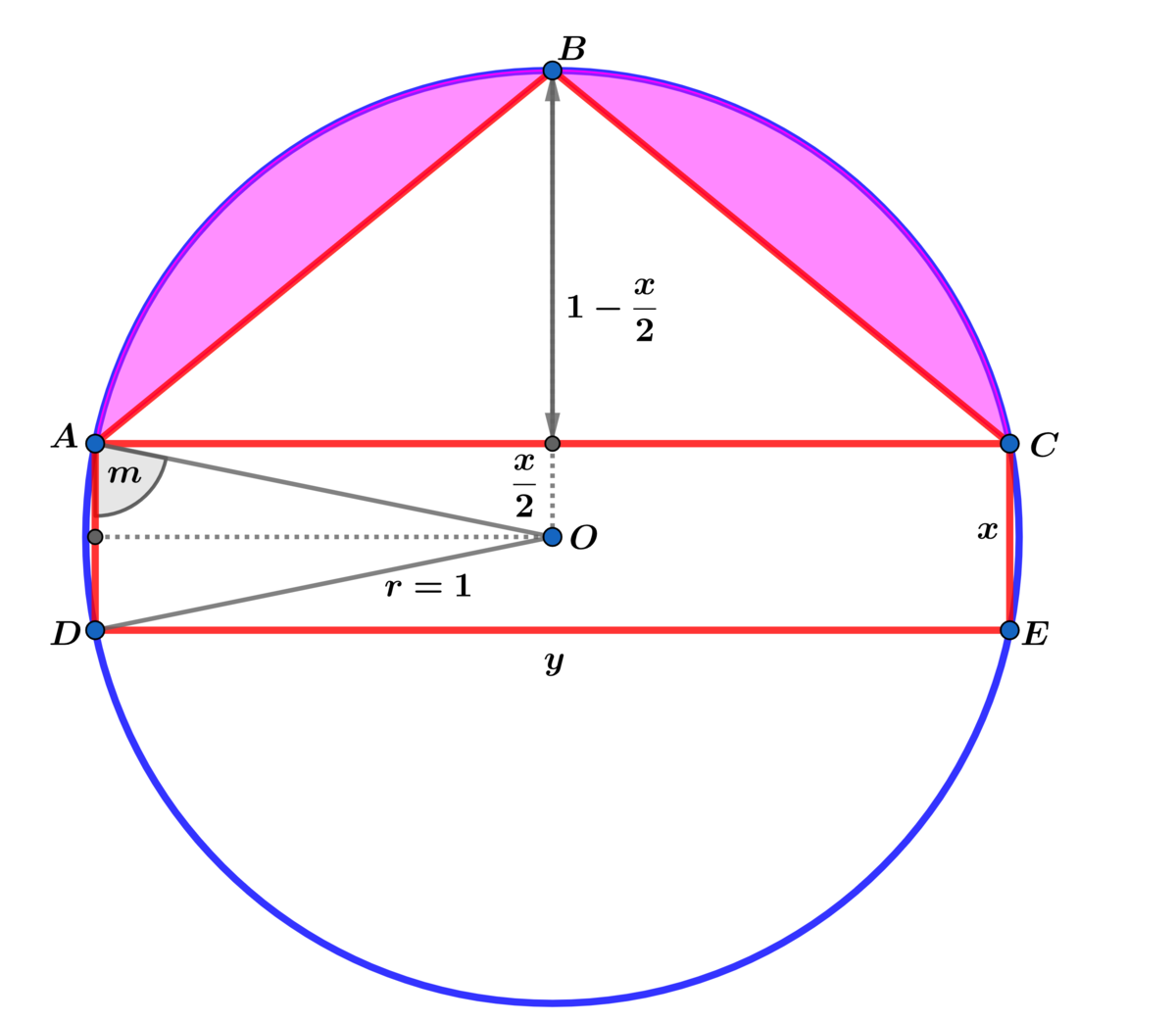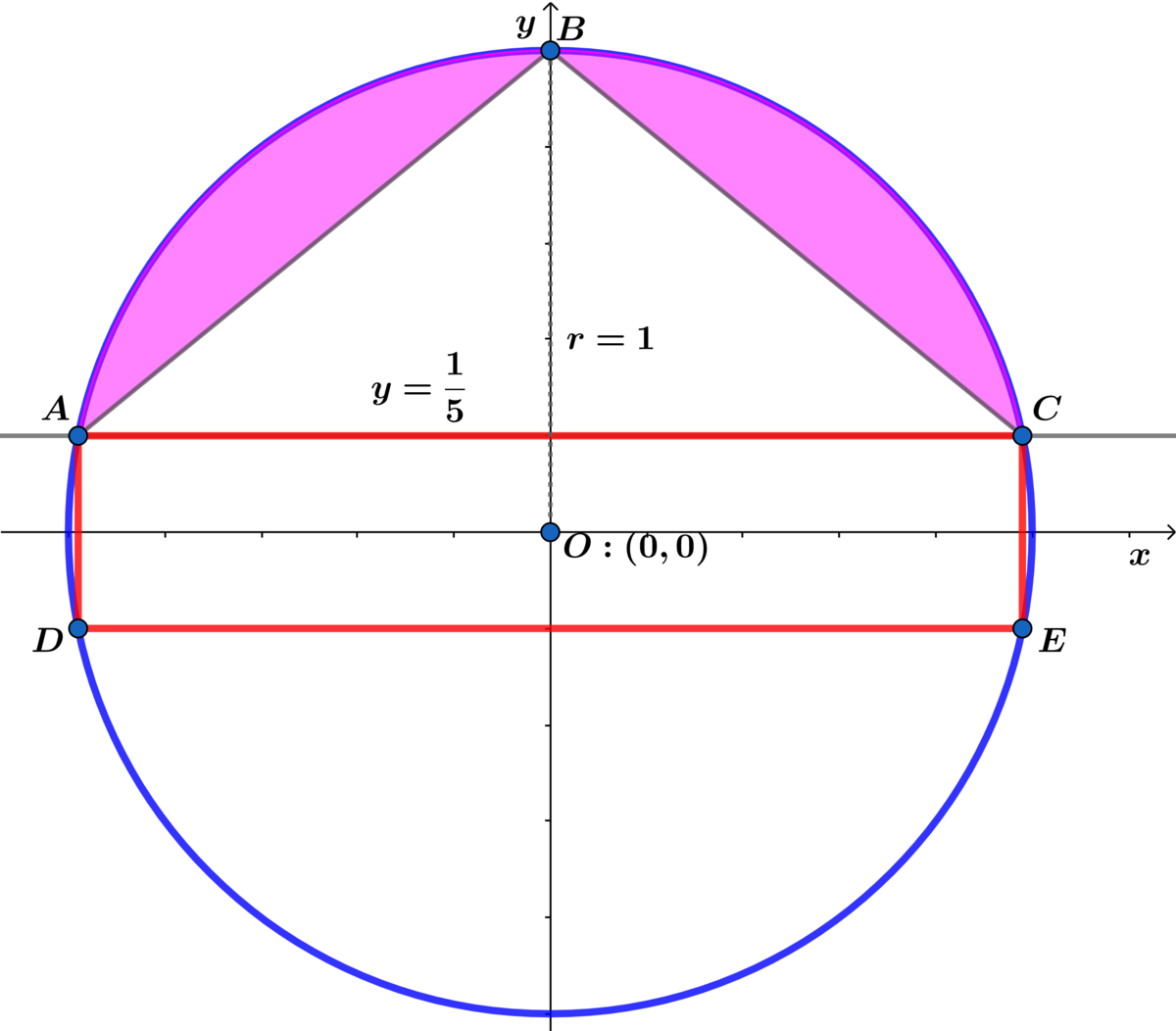Area Problem.

In the diagram above, rectangle A C D E and isosceles △ A B C are of equal area and are inscribed in a circle of radius r = 1 .
If the area of the pink regions A = arcsin ( c a b ) − c a b , where a , b , and c are positive coprime integers, find a + b + c .
The answer is 13.
This section requires Javascript.
You are seeing this because something didn't load right. We suggest you, (a) try
refreshing the page, (b) enabling javascript if it is disabled on your browser and,
finally, (c)
loading the
non-javascript version of this page
. We're sorry about the hassle.
2 solutions

A △ A B C = 2 1 ( 1 − 2 x ) y = A A C D E = x y ⟹ 2 − x = 4 x ⟹ x = 5 2
5 1 = cos ( m ) and 2 y = cos ( 2 π − m ) = sin ( m ) ⟹ y = 2 sin ( m ) = 2 2 5 2 4 = 5 4 6
⟹ A A C D E = x y = 2 5 8 6 = A △ A B C

The area I of the bounded circular region above the line y = 5 1 and the circle
x 2 + y 2 = 1 is:
I = ∫ 5 − 2 6 5 2 6 1 − x 2 − 5 1 d x ,
Letting x = sin ( θ ) ⟹ d x = cos ( θ ) ⟹ I = arcsin ( 5 2 6 ) − 2 5 2 6 ⟹
The desired area A = I − 2 5 8 6 = arcsin ( 5 2 6 ) − 5 2 6 = arcsin ( c a b ) − c a b ⟹
a + b + c = 1 3 .
Note: A △ A B C = 2 1 y ( 1 − 2 x ) = 2 1 ( 5 4 6 ) ( 5 4 ) = 2 5 8 6 = x y
Let the height A D = C E = h . Then the base of the triangle and rectangle A C = D E = 2 1 − ( 2 h ) 2 = 4 − h 2 . Since the area of △ A B C and the area of rectangle A C D E are equal, then
[ A B C ] 2 1 ( 1 − 2 h ) 4 − h 2 2 1 ( 1 − 2 h ) 2 − h ⟹ h = [ A C D E ] = h 4 − h 2 = h = 4 h = 5 2
Let the center of the circle be O . Then the area of the pink regions is
A = area of sector OABC − area of △ A O C − area of △ A B C = 2 ∠ A O C ⋅ 1 − 2 1 ⋅ 2 h ⋅ A C − 2 1 ( 1 − 2 h ) ⋅ A C = sin − 1 ( O C 2 1 A C ) − 2 1 ⋅ A C = sin − 1 ( 2 4 − h 2 ) − 2 4 − h 2 = sin − 1 ( 5 2 6 ) − 5 2 6 The radius of the circle = 1
Therefore a + b + c = 2 + 6 + 5 = 1 3 .